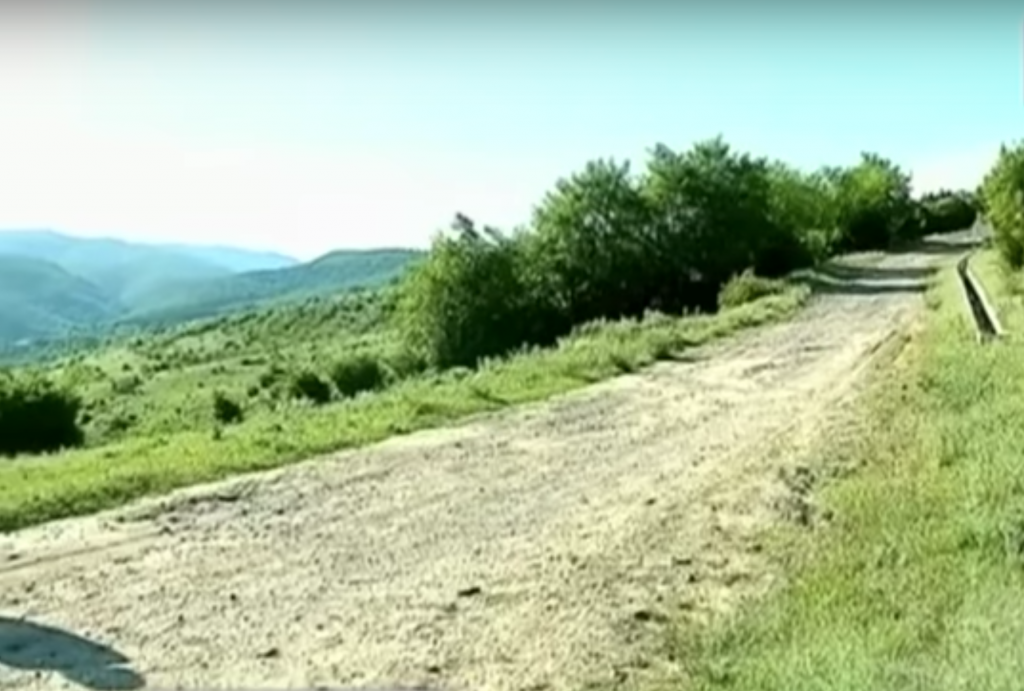The Moscow-backed authorities of Tskhinvali Region/South Ossetia say some Ossetian territories were left outside their control and intend to probe into possible errors committed by “the state commission for delimitation and demarcation of the state border between Georgia and the Republic of South Ossetia.”
The investigative commission was endorsed by the region’s legislature on June 20, citing numerous appeals of residents of village Tsnelisi in Znauri district, west of Tskhinvali, that “part of their village” fell beyond the region’s boundaries.
Ruslan Tedeev, one of the members of the legislative assembly, said the lawmakers carried out preliminary study on the matter, and found out “that there still are places where the border [with Georgia] was fixed incorrectly.”
“The issue requires scrupulous examination, and if violations have been made in the border demarcation process, intentionally or unintentionally, they need be identified and corrected,” said Piotr Gasiev, head of the region’s legislature.
“This is outrageous and someone should be held accountable – how did it happen that some houses were left on the territory of Georgia and now we are forced to return our territories back,” added Inal Mamiev, deputy head.
Disputed Land
Although exact whereabouts of Tskhinvali’s territorial claims remain unclear, the new development means that additional Tbilisi-controlled territory might fall on the Russian-controlled area.
Ruslan Tedeev, one of the members of the legislature, specified at the June 20 meeting that the disputed territory in Tsnelisi includes a talcum mine with “significant marble deposits.”
Earlier, Tskhinvali authorities have also claimed some households of Tsnelisi residents were left outside the region’s boundaries as the line was drawn strictly in line with the administrative borders of the Autonomous Oblast.
Residents of Koda, a nearby village in Tbilisi-controlled Kareli Municipality, fear that Tskhinvali’s territorial claims could affect them as well, cutting the only functional road linking the village to the rest of Georgia (through village Abano).
Civil.Ge inquired into the matter, but was unable to verify the details on Tsnelisi households in the disputed area.
The two publicly available maps of the region – that by the Google Maps and the Russia-based Yandex show a different picture on other areas in question – while in the former the Koda-Abano road falls within the region’s FSB-protected boundaries, in Yandex maps neither Koda-Abano road, nor the talcum mine appear to be in the region’s boundaries.
Tsnelisi-Koda-Abano Map by Google Maps.
Tsnelisi-Koda-Abano Map by Yandex.ru.
After the August, 2008 war and following recognition of Tskhinvali by Moscow, Russian forces in the region started unilateral “border demarcation” activities roughly in line with the administrative borders of the former Autonomous Oblast of South Ossetia. Tbilisi has condemned the process and rejected Moscow’s appeals to engage in the demarcation talks with Tskhinvali.
Reactions in Tbilisi
Reconciliation Minister Ketevan Tsikhelashvili said the decision to establish the commission was “a provocation” that could “aggravate security and humanitarian situation on the ground.”
“Instead of erecting barbed wires and other restrictions, it would be better to listen to the residents of Muguti, Tsnelisi, Artsevi, Ikorta, Abrevi, Orchosani and Tsinagari (villages in Tskhinvali Region bordering with Georgia proper), where both Georgians and Ossetians are suffering and are asking for the freedom of movement, but are getting barbed wires in response,” she said.
“It would be better to work on the solution together, especially in light of the fact that Georgia’s peace policy entails important and concrete initiatives for improving the well-being of locals,” Tsikhelashvili added.
Deputy Foreign Minister Davit Dondua, the country’s chief negotiator in the Geneva International Discussions, echoed Tsikhelashvili’s sentiments, saying the move was “a provocation” that “takes place practically every day in the occupied regions and adjacent territories.”
“There can be no delimitation when there is no border,” Dondua also stressed, adding that “if anyone has any claims on anything, that is the nearly hundred villages populated by ethnic Georgians, which were bulldozed to the ground by Russian occupants and the representatives of their occupation regime.”
This post is also available in: ქართული (Georgian) Русский (Russian)

